Foundation Year
The English curriculum is built around the three interrelated strands of language, literature and literacy. Teaching and learning programs should balance and integrate all three strands. Together, the three strands focus on developing students' knowledge, understanding and skills in listening, reading, viewing, speaking, writing and creating. Learning in English builds on concepts, skills and processes developed in earlier years, and teachers will develop and strengthen these as needed.
In the Foundation year, students communicate with peers, teachers, known adults and students from other classes.
Students engage with a variety of texts for enjoyment. They listen to, read and view spoken, written and multimodal texts in which the primary purpose is to entertain, as well as some texts designed to inform. These include traditional oral texts, picture books, various types of stories, rhyming verse, poetry, non-fiction, film, multimodal texts and dramatic performances. They participate in shared reading, viewing and storytelling using a range of literary texts, and recognise the entertaining nature of literature.
The range of literary texts for Foundation to Year 10 comprises Australian literature, including the oral narrative traditions of Aboriginal and Torres Strait Islander Peoples, as well as the contemporary literature of these two cultural groups, and classic and contemporary world literature, including texts from and about Asia. Literary texts that support and extend Foundation students as beginner readers include decodable and predictable texts that range from caption books to books with one or more sentences per page. These texts involve straightforward sequences of events and everyday happenings with recognisable, realistic or imaginary characters. Informative texts present a small amount of new content about familiar topics of interest; a small range of language features, including simple and compound sentences; mostly familiar vocabulary, known, high-frequency words and single-syllable words that can be decoded phonically, and illustrations that strongly support the printed text.
Students create a range of imaginative, informative and persuasive texts including pictorial representations, short statements, performances, recounts and poetry.
(source: www.australiancurriculum.edu.au)
Achievement Standard
Receptive modes (listening, reading and viewing)
By the end of the Foundation year, students use predicting and questioning strategies to make meaning from texts. They recall one or two events from texts with familiar topics. They understand that there are different types of texts and that these can have similar characteristics. They identify connections between texts and their personal experience.
They read short, decodable and predictable texts with familiar vocabulary and supportive images, drawing on their developing knowledge of concepts of print, sounds and letters and decoding and self-monitoring strategies. They recognise the letters of the English alphabet, in upper and lower case and know and use the most common sounds represented by most letters. They read high-frequency words and blend sounds orally to read consonant-vowel-consonant words. They use appropriate interaction skills to listen and respond to others in a familiar environment. They listen for rhyme, letter patterns and sounds in words.
Productive modes (speaking, writing and creating)
Students understand that their texts can reflect their own experiences. They identify and describe likes and dislikes about familiar texts, objects, characters and events.
In informal group and whole class settings, students communicate clearly. They retell events and experiences with peers and known adults. They identify and use rhyme, and orally blend and segment sounds in words. When writing, students use familiar words and phrases and images to convey ideas. Their writing shows evidence of letter and sound knowledge, beginning writing behaviours and experimentation with capital letters and full stops. They correctly form known upper- and lower-case letters.
(source: www.australiancurriculum.edu.au)
- Plus Plan
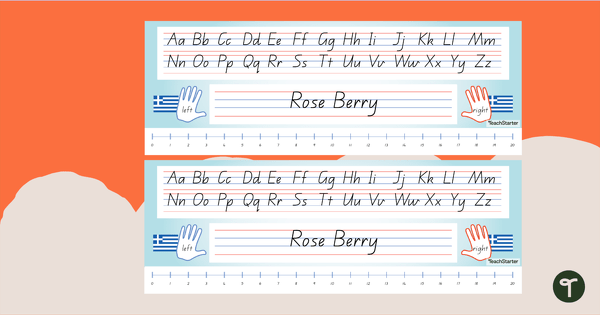
Greece-Themed Editable Desk Name Plates
Help your students feel at home on the first day of a new school year with these customisable desk name plates to match your chosen focus country.
- Plus Plan
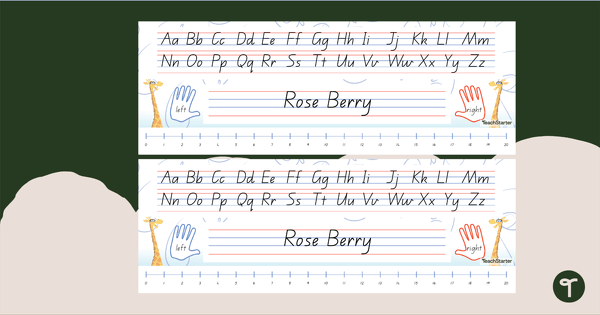
Giraffe-Themed Desk Name Plates
Create individualised desk name plates using this editable Giraffe-themed desk name plate template.
- Plus Plan

Frog-themed Editable Desk Name Plates
Create individualised desk name plates using this editable Frog-themed desk name plate template.
- Plus Plan
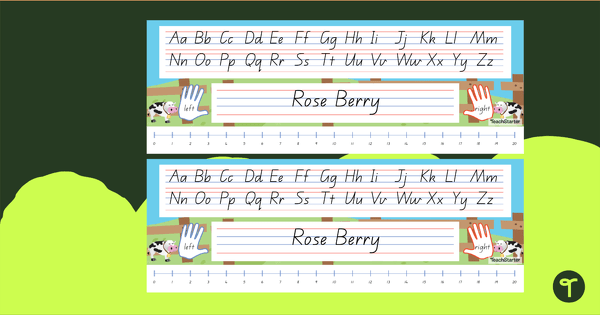
Farm Yard-themed Editable Desk Name Plates
Create individualised desk name plates using this editable Farm Yard-themed desk name plate template.
- Plus Plan
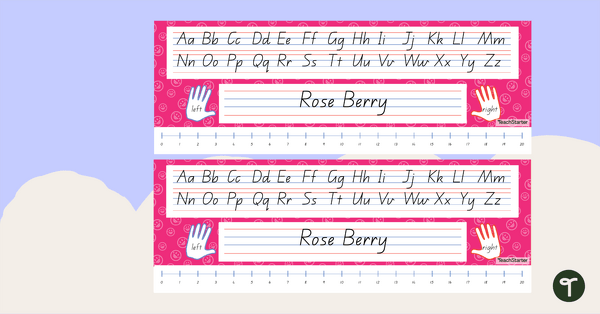
Pink Emoji-Themed Desk Name Plates
Help your students feel at home on the first day of a new school year with these customisable desk name plates to match your classroom theme.
- Plus Plan

Orange Emoji-Themed Editable Desk Name Plate
Help your students feel at home on the first day of a new school year with these customisable desk name plates to match your classroom theme.
- Plus Plan
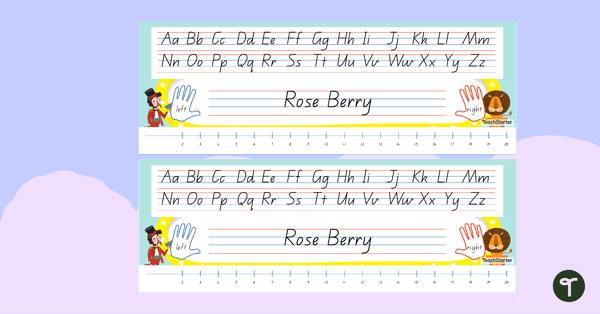
Circus-Themed Desk Name Plates
Help your students feel at home on the first day of a new school year with these customisable desk name plates to match your classroom theme.
- Plus Plan
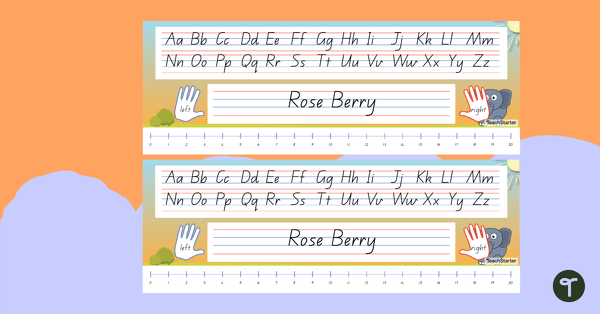
Elephant-Themed Desk Name Plates
Create individualised desk name plates using this editable Elephant-themed desk name plate template.
- Plus Plan
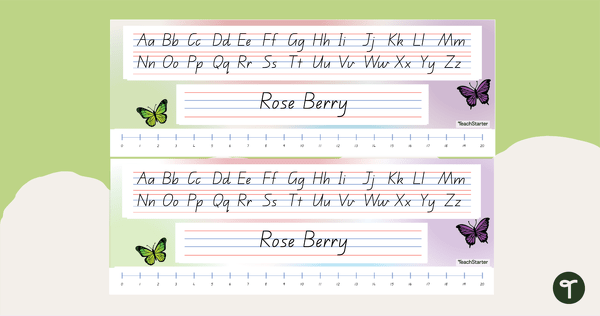
Butterfly-Themed Desk Name Plates
Create individualised desk name plates using this editable Butterfly-themed desk name plate template.
- Plus Plan
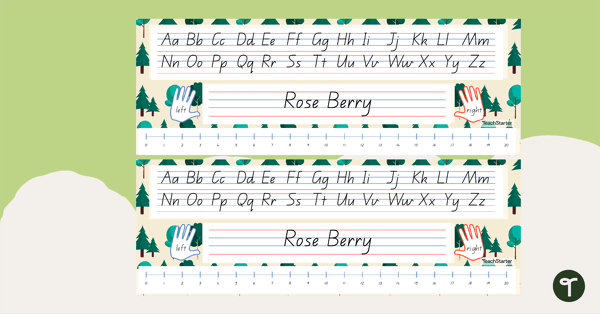
Camp-Themed Desk Name Plates
Create individualised nature-inspired Camp-themed desk name plates for your students this school year.
- Plus Plan
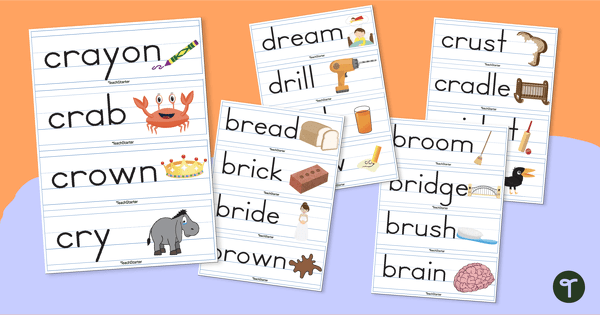
R Blend Word Wall Vocabulary
Forty-eight R blend vocabulary cards for a word wall.
- Plus Plan
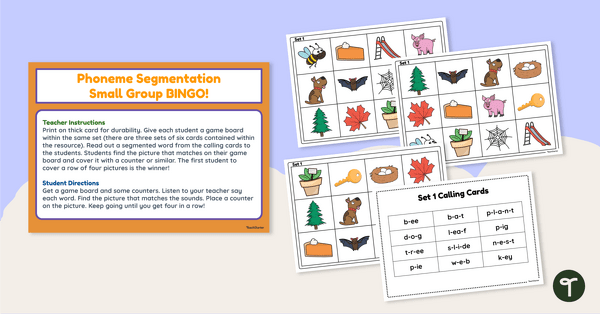
Phoneme Segmentation Bingo
Help students master phoneme segmentation through targeted listening with this fun and engaging bingo game.
- Plus Plan
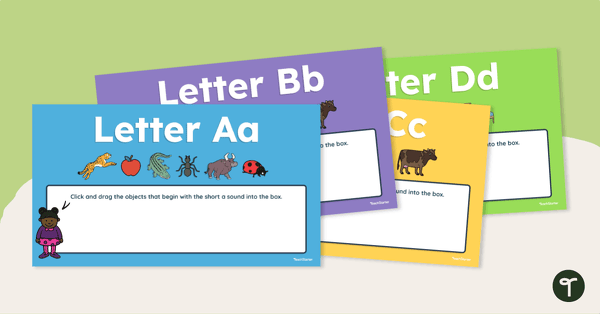
Initial Sound - Interactive Sorting Activity
Practise identifying initial sounds by working your way through each letter of the alphabet.
- Plus Plan
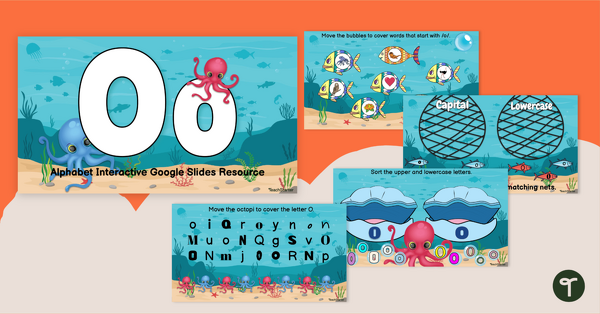
Alphabet Interactive Activity - Letter O
Explore the Letter O through technology with this interactive drag-and-drop activity.
- Plus Plan
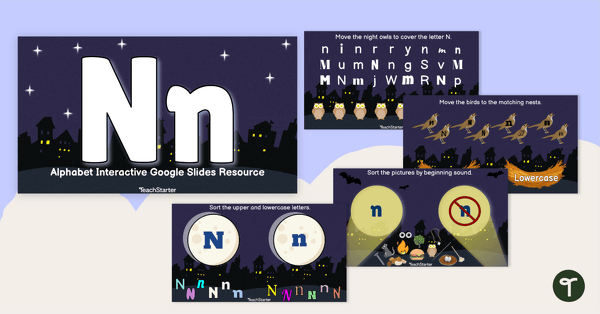
Alphabet Interactive Activity - Letter N
Explore the Letter N through technology with this interactive drag-and-drop activity.
- Plus Plan

Alphabet Interactive Activity - Letter M
Explore the Letter M through technology with this interactive drag-and-drop activity.
- Plus Plan
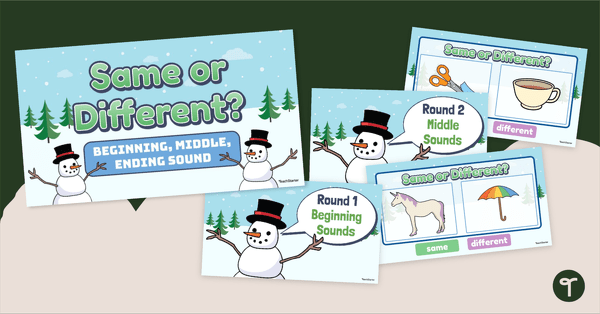
Beginning, Middle and End Sounds Interactive Activity
Practise isolating beginning, middle and ending sounds in words with a Google Slides interactive game.
- Plus Plan
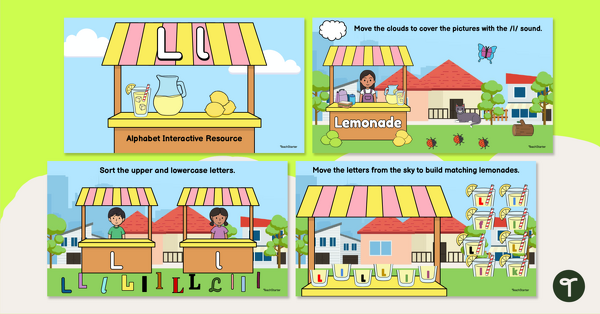
Alphabet Interactive Activity - Letter L
Explore the Letter L through technology with this interactive drag-and-drop activity.
- Plus Plan

Alphabet Interactive Activity - Letter K
Explore the Letter K through technology with this interactive drag-and-drop activity.
- Plus Plan
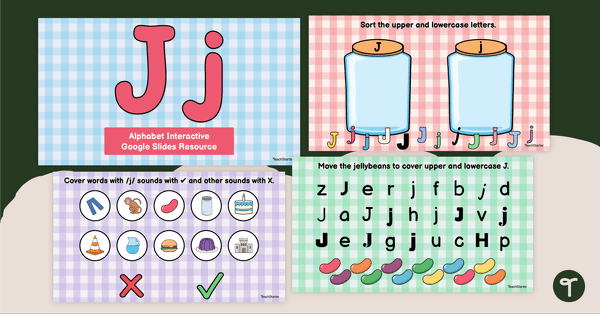
Alphabet Interactive Activity - Letter J
Explore the Letter J through technology with this interactive drag-and-drop activity.
- Plus Plan
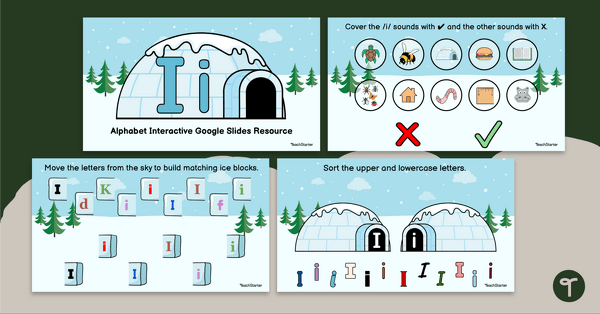
Alphabet Interactive Activity - Letter I
Explore the Letter I through technology with this interactive drag-and-drop activity.
- Plus Plan
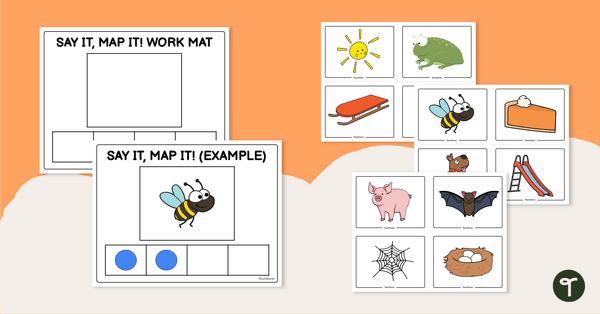
Phoneme Segmentation Work Mats - Count It!
Develop phonemic awareness using hands-on manipulatives with this counting phonemes work mat and accompanying picture cards.
- Plus Plan
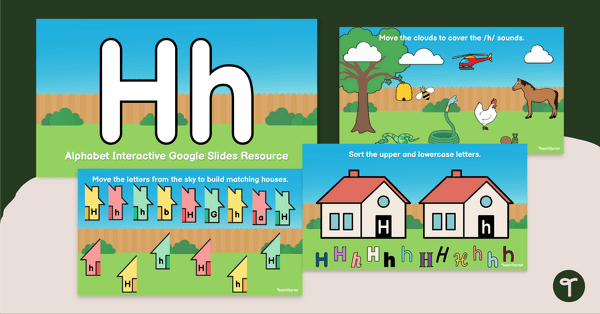
Alphabet Interactive Activity - Letter H
Explore the Letter H through technology with this interactive drag-and-drop activity.
- Plus Plan
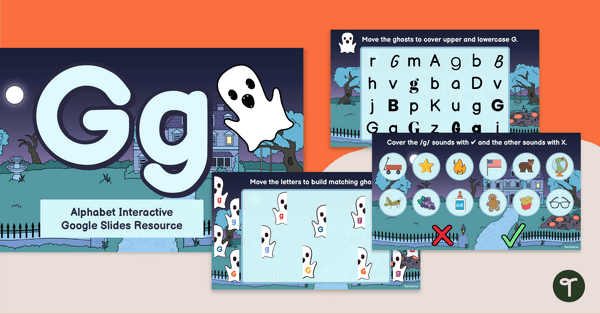
Alphabet Interactive Activity - Letter G
Explore the Letter G through technology with this interactive drag-and-drop activity.
- Plus Plan
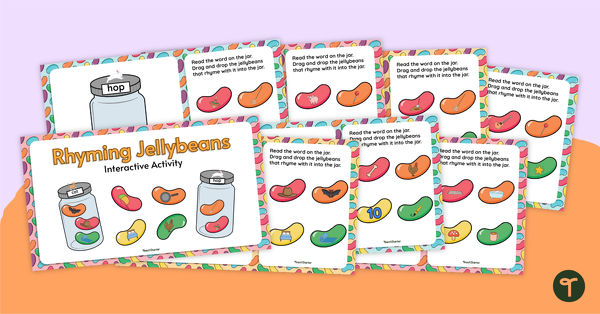
Rhyming Jellybeans - Interactive Activity
Sweeten up your literacy lessons with an interactive jellybean-themed rhyming word game for the Early Years.
- Plus Plan
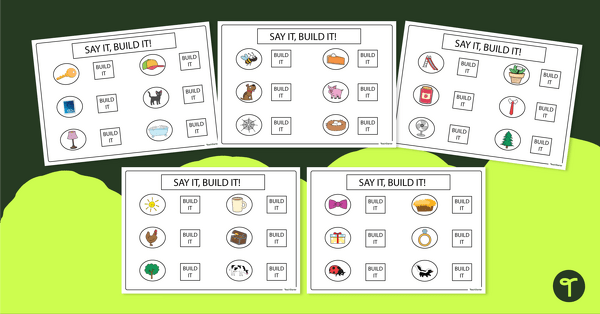
Phoneme Segmentation Work Mats - Build It!
Develop phonemic awareness using hands-on manipulatives with this set of ten phoneme segmentation work mats.
- Plus Plan

Counting Phonemes Interactive Activity
Help students segment 2-, 3- and 4-phoneme words into their distinct sounds with this engaging interactive resource.
- Plus Plan
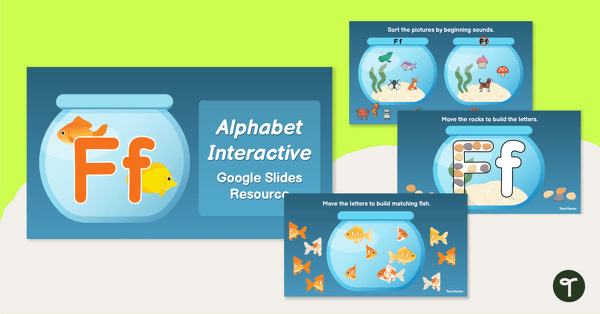
Alphabet Interactive Activity - Letter F
Explore the Letter F through technology with this interactive drag-and-drop activity.
- Plus Plan
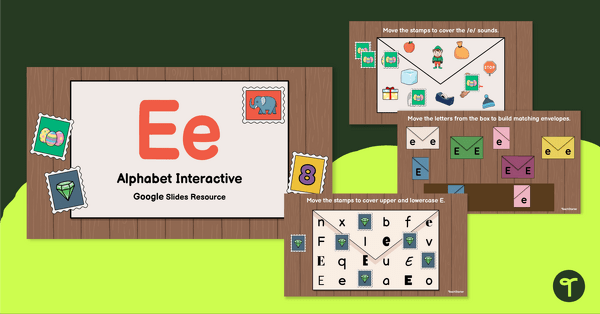
Alphabet Interactive Activity - Letter E
Explore the Letter E through technology with this interactive drag-and-drop activity.
- Plus Plan
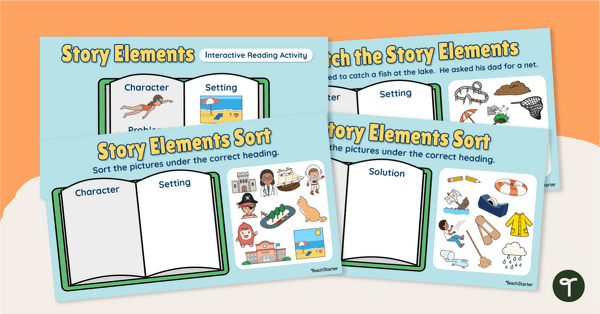
Story Elements Interactive Activity
Introduce your kindergarten and first-grade students to the elements of a story using this interactive digital activity.
- Plus Plan
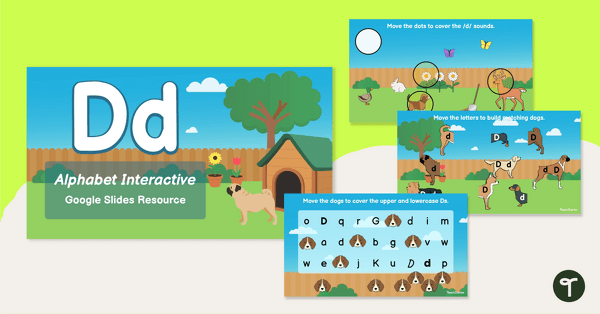
Alphabet Interactive Activity - Letter D
Explore the Letter C through technology with this interactive drag-and-drop activity.
- Plus Plan
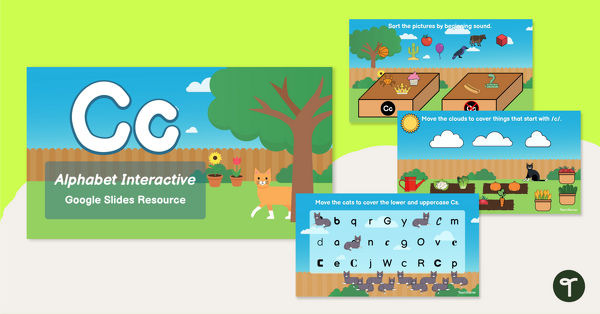
Alphabet Interactive Activity - Letter C
Explore the Letter C through technology with this interactive drag-and-drop activity.